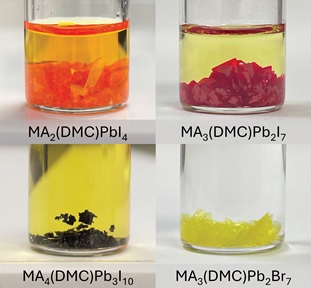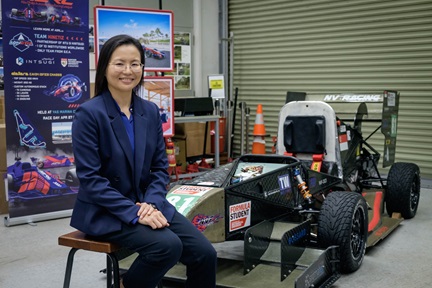Lighting the future of quantum photonics
A new phenomenon opens the door to novel quantum applications.

Nonlinear optics is essential for many technological advancements, from material analysis to quantum computing. One process associated with nonlinear optics is second-harmonic generation (SHG), or frequency doubling.
SHG occurs when the interaction between an incoming wave of light and a material with nonlinear optical properties generates another wave with twice the frequency.
Graphene, which is only one atom thick, holds great promise for the development of miniature photonic nonlinear devices. However, the symmetrical arrangement of its atoms inhibits SHG.
To break the symmetry, researchers co-led by Assoc Prof Nam Donguk and PhD student Lu Kunze of NTU’s School of Electrical and Electronic Engineering fabricated an array of nanometre-sized pillars of graphene. They then applied a non-uniform strain to the edges of the nanopillars and observed a never-before-seen type of SHG in graphene.

Scanning electron microscopy image of the graphene nanopillars. Credit: NTU.
The novel SHG was 30% stronger than the SHG observed in hexagonal boron nitride, a material commonly used in optics and photonics applications. At ultra-low temperatures close to absolute zero, the novel SHG was also almost 50 times stronger than at room temperature.
According to Assoc Prof Nam, this discovery opens new opportunities for graphene to be used in innovations like quantum photonics devices.
The breakthrough was reported in “Strong second-harmonic generation by sublattice polarization in non-uniformly strained monolayer graphene”, published in Nature Communications(2023), DOI: 10.1038/s41467-023-38344-5.
The article appeared first in NTU's research & innovation magazine Pushing Frontiers (issue #23, March 2024).




.tmb-listing.jpg?Culture=en&sfvrsn=29c7e020_1)
.tmb-listing.jpg?Culture=en&sfvrsn=55153609_1)

